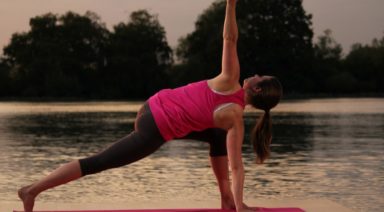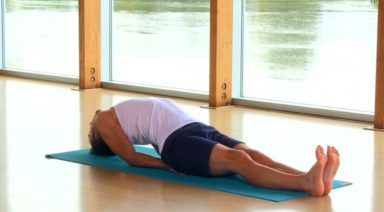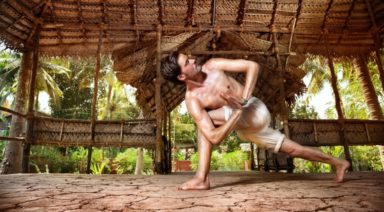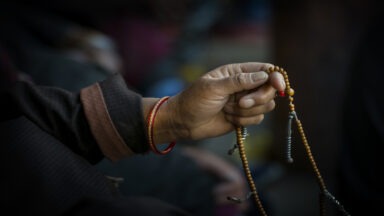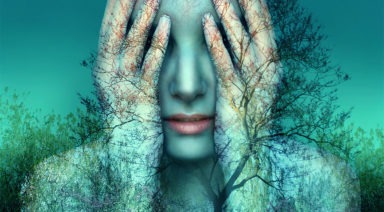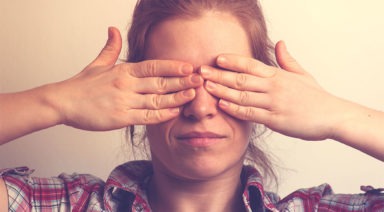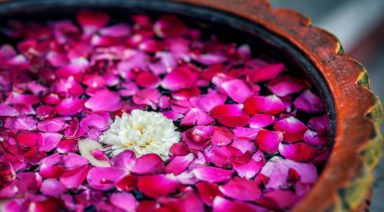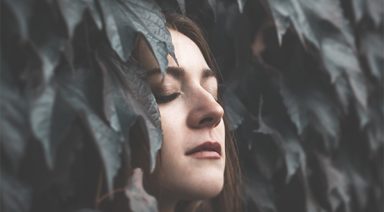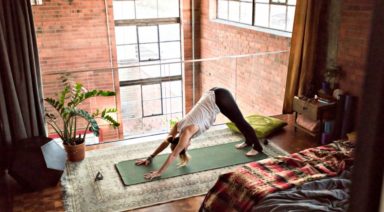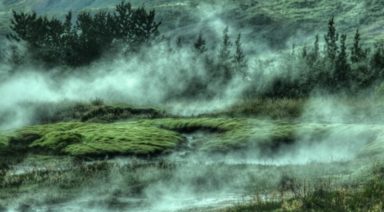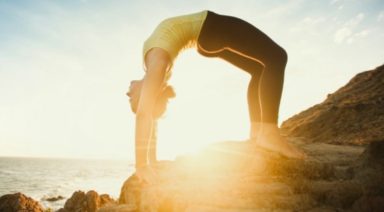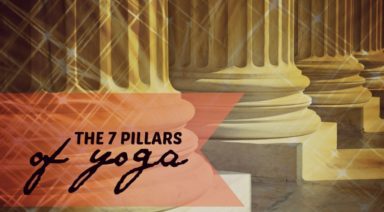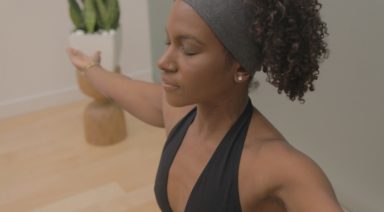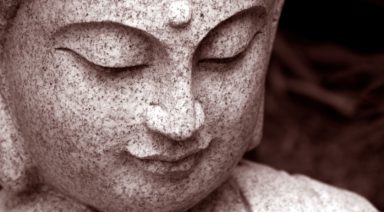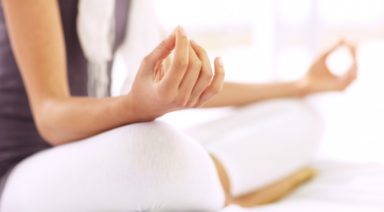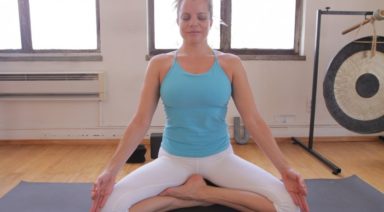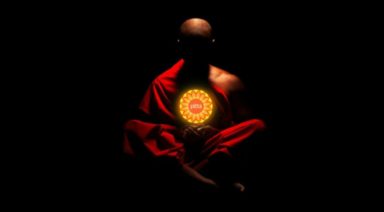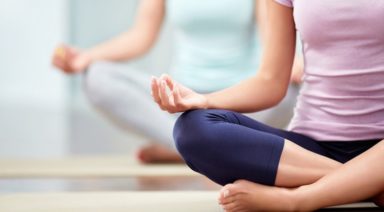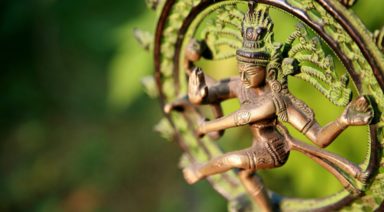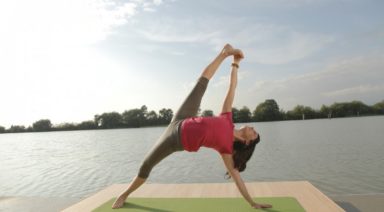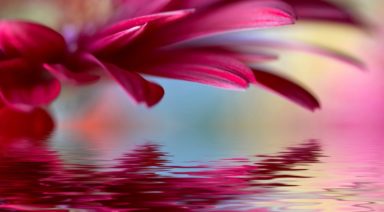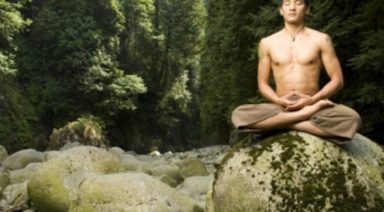The 3 Pillars of Life: Brahmacharya
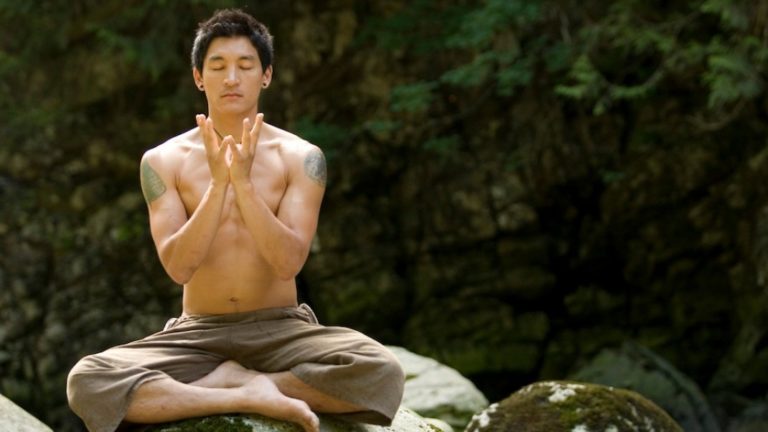
Over the last few months I have been exploring the theme of the 3 Pillars—right diet, sleep, and brahmacharya—in my classes and personal practice to help ease into this new fall season with a stronger commitment to my self-care and Ayurveda. My first article in this trilogy emphasized diet and introduced you to the Ayurvedic term agni, which describes your digestive fire; it included a few recipes to enhance your digestion if it is weak or irregular. The second article highlighted sleep and offered some practical tips on how to improve your sleep with self-care practices and diet.
This month, I will shed some light on brahmacharya as well as creativity and their role in upholding the three pillars. Brahmacharya is traditionally a practice that emphasizes management of one’s sexual energy. From the yogic perspective, excessive sexual activity will weaken or exhaust your vital energy. Now just to be clear, the idea of brahmacharya is not to make us all monks or withdraw completely from all sexual activity—it’s actually to raise your awareness that engaging in too much sexual activity will reduce your shukra (sexual energy, reproductive fluids), which is necessary to build ojas. Ojas is the word Ayurvedic practitioners use to describe the most refined by-product that is created by the food we consume after it is digested to build up our tissues (dhatus: fluids, blood, muscle, fat, bone, nervous system, reproductive fluids). Excessive sex and stress will deplete ojas in the sperm and ovum as well as curtail ojas from entering the heart. Ojas is technically not considered a tissue of the body; it’s more like the strength or quality intrinsic to a tissue that gives you vigor, strengthens your immune system, provides stability to the body and mind, and keeps you juicy and plump like a newborn baby.
The Ayurvedic yogis believe that reproductive fluids are the final step in a 30-day process that creates the dhatus; as noted above, these fluids are one of the dhatus and are the ones that are produced last. Unfortunately, during the thirty days, many factors can compromise the production of the dhatus; if this occurs then it will lead to a depletion of ojas, contributing to the reduction of vigor, immunity, radiant glow, and longevity we naturally desire. Yet, if all goes well through the stages of food to dhatus transformation, our tissues will be strong and we will feel a surplus of energy that moves us to create or be creative on a regular basis.
What creative outlets do you have in your daily life? What do you love to do in your free time? In my opinion, responding to the urge to create when it arises is one of the most loving things you can do for soul. If brahmacharya is part of your regular practice, there will be a surplus of energy to explore in life, perhaps to ignite your next poem, photograph, or song. With too much sexual activity or stress it’s not uncommon to lose your libido or urge to be creative. As daunting as it might sound to add one more practice to your already busy life, I find that the rhythm of daily creative practice becomes its own habit and therefore grows easier over time.
As we head into the cooler, darker fall and winter seasons that invite us into the warmth of our homes, we’re provided with a great opportunity to evaluate our relationship to brahmacharya and creativity. Trust that whatever amount of creative time arises each day is the right amount. It’s the intention that counts. Trust that there is room in your day to practice and that you deserve this creative time. Antoine de Saint-Exupery has said, “A single new habit can awaken within us a stranger totally unknown to us.” This was my personal experience as I discovered and danced with this beautiful new stranger, who was truly none other than creative facets of the unexplored me. If you are ready to meet and embrace the creative divine in you, I invite you to undertake a daily creative ritual. Just as much as we need good food and sleep to be healthy and productive, I believe we also need to have space to do what we love in order to feel our best.
The Mind, Body, Spirit Morning Ritual You Won't Want to Skip

There is definite validity to the phrase “Waking up on the right foot.” What does your day look like when you have an invigorating start that leaves you vitalized and raring to go, versus a bummer morning that you need to overcome before tackling your challenges? Not only are you more productive and centered, but you also have a better mindset and outlook to do what you need to do.
Time recently published Inc.com’s 6 awesome tips that can be transformed into the ultimate morning routine. It takes into consideration your body, mind and even spirituality, if you’re so inclined. Check out the tips with a few extra added twists and takes:
1. Go at least 15 minutes sans screens
How much of our time goes into staring at screens all day ping back and forth on our smartphones, watching endless feeds. There is absolutely zero need to start your day off this way and begin a trend of being at your technology’s beck and call, instead of the other way around. You also be amazed at how much faster you move with your focus on your morning tasks. Plus, it keeps your work-home balance optimal, as you aren’t tempted to check your work emails before you get into the office.
2. Lemon water is your friend
I’ve covered this before, but warm lemon water with fresh organic lemon is an amazing thing, especially when you get to it as the first thing you do in the morning. Aside from nuking that morning breath, its benefits range from helping with digestion to boosting your metabolism. Check out this article on drinking lemon water and add a fresh twist to your morning for the full details.
3. There’s a right way to get out of bed
I was totally unaware of this, but there’s “one best way, if your body allows for it” to get out of bed. You need to roll over onto your right side, then push yourself up into a sitting position before standing with a straight back (no hunching). According to Inc.com, it’s the perfect combination of pressure-free and body-friendly. Instead of jarring your systems, it gently helps prepare your body for the day.
4. Set and affirm your goals for the day
Inc.com only covers setting “feasible goals for the day” (limited to three for achievability), but the power of the spoken word and setting your intention can make an incredible difference. Once you have it down, take a few moments to say it out loud every morning! Eventually, you won’t need the written version, and you can say it by memory. If you say it often enough, you’ll start believing it for yourself.
Affirmations are thought to work scientifically because humans have a thing called a Reticular Activating System (RAS) in their brains. This is like a filter that lets in information that we need and filters out information that we don’t. If we didn’t have this system, we would be bombarded with so much information that our senses would overload, and we would go into massive overwhelm. Instead, our brain registers what matters to us based on our goals, needs, interests, and desires.
When you say an affirmation over and over again, it affects your brain on a very specific level. One thing that happens is that it sends a very clear message to your RAS that this is important to you. When you do that, it gets busy noticing ways to help you achieve your goals. Prepare to be amazed at how many goals you accomplish!
5. Stretch it out
You don’t have to practice yoga if you don’t want to (though that’s definitely an amazing way to stretch your body!). You can, instead, do this from the comfort of your own bed. Inc.com suggests a simple stretched-out-legs-and-arms-overhead movement. If you feel like moving to a padded surface on the floor, you can try a supine twist or whatever feels right. Think about it…your body has been “offline” for many an hour, so warm it up properly.
6. Meditation persuasion
From Oprah to Giselle Bundchen, so many folks swear by meditation. And, as a good reminder from Inc.com, “meditation is only as strict, long, short, boring, or annoying as you make it.” A guided meditation can be an incredible way to start your day, but if you prefer not to travel the more metaphysical, spiritual route, all you really need to do is sit in a comfortable position and focus on clearing your mind. Even less than a minute can make a major difference.
7. Treat breakfast with respect
I’m adding my own here, but listen up. Breakfast is key. Don’t skip it. Don’t McDonald’s it. Quite thinking that if you eat junk, or just a cup of coffee, or nothing at all, that you will be a champion. Your body hasn’t had anything to eat for eight hours or so; it desperately needs quality refueling. Put some thought into what breakfast is best for you, even as far back as the night before, to make sure that you get the nutrition you deserve.
Is hitting the snooze button really worth it? Don’t be defeated by the day; instead, punch the day in the face right from the start!




